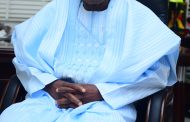The graphic serving as cover picture for this piece could as well have been a computer simulated stuff in an age when the real and the unreal can no longer be distinguished. But it is still powerfully evocative of what it was for many of us who spent formative years in the idyllic of the hamlet.
There was no insecurity. Food was not a problem. Snake bite was the most frightening threat but it didn’t kill. All you needed do is to be able to swallow a bottle of palm oil. How peasants knew that palm oil neutralises snake venom must be interesting. Malaria didn’t kill as well as long as your father could collect ‘agigle’ leaves and boil it. That is if you were somewhere in Idomaland but this is also applicable in Igboland if Achebe’s story of how Okonkwo treated malaria in Things Fall Apart is anything to go by.
The seven deadly diseases ravaged or must have ravaged but that does not contradict the point that peasant-parents and their children were not sitting ducks for them. Interestingly, herbal improvisation had no side effects as the body takes what it needs and expels what is not needed. The exception here is that tree with hard back which every community dweller knew as the first choice for people driven to the option of committing suicide. It is called ‘ene’, but pronounced differently from Ene which is ‘mother’ or motherhood, again, in Idoma language.
For Intervention, the foregoing is the context of the above graphic. It is a communal context of the child prodigy there, probably coming home in the evening from an errand since morning. The environment is provocative of the temptation to experimentation that accounts for that: the errand takes a second place to the agemates playing football in the village playground and who empty into the big stream for a good swimming session that closes the impromptu hunting expedition early evening, all on bare foot. It doesn’t matter that, in many cases, the rats out maneuvered the heroes but that doesn’t happen all the time.
The errand that took the hero out of the house only comes back to the memory on approaching home. It is the consequences that produce the bond between mothers and male child in most cases. Boys are automatic heroes of mothers if not of most houses. Certainly, girls were not that lucky. So, while most fathers insist on punishing the hero for truancy, most mothers step in to abort such punishment, insisting on the hero being too young to be so conscientious. It is mothers who then strips the hero of the dresses that have become so dirty if not torn from the diverse escapes of the day, bath him and bring the best of the meal, including a piece of the bushmeat daddy killed earlier in the day.
Boarding school, peer influence, teachers and sundry mentors change a lot in the psychology of the hero but most heroes remain locked to the hands which rocked the cradle: the mother.
Of course, every picture is interpreted in the image of the interpreter, meaning that this graphic cannot have one, universal meaning for everyone. To that extent, this is just one plausible sense of it. Someone in Europe may just look at it as the picture of a dirty, poverty-stricken chap from one of the fringes of the world. That could also be a correct reading of it. After all, what one sees depends on where one stands.
Intervention thanks the sender!




























